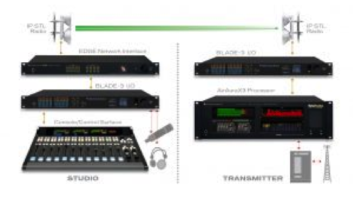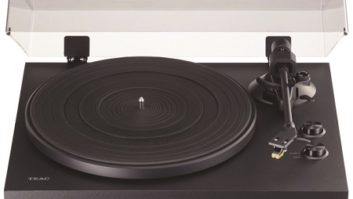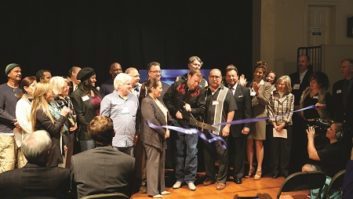The need for a good, inexpensive STL solution for broadcasters is a major concern for engineers. The lower cost aspect of unlicensed operation is tempting, but with no guarantee of signal performance, power limitations and the possibility of interference, that option can result in more headaches than one might expect.
Licensed microwave, while more expensive initially, carries with it higher transmit powers, longer ranges and interference protection from unwanted signals. It also has some other requirements that engineers need to keep in mind.
Part 74 and 101 licensed microwave systems require some additional planning and thought. The proposed frequencies will need to be analyzed to ensure there is no interference to or from other users, and the frequency use will need to be coordinated per FCC rules. While this can be done by the individual station or engineer, it can be a cumbersome and involved process for someone who does not have the tools and the time to perform this work. Private frequency coordination companies can alleviate that burden and use their time-tested tools and experience to make it a smooth process for the station.
BAND OPTIONS
Once you have established that there is line of sight between the two antennas at the endpoints of the path, the next step is to determine the frequency band you will use. Broadcasters now have access to not only Part 74 frequency bands, but also to the Part 101 frequency bands as well — including for the “last mile.” (Until a few years ago, there was a prohibition on using a Part 101 link as the “final RF link” to a broadcast transmitter site.)
These options give broadcasters more flexibility in planning their systems as they are no longer constrained to only a couple of frequency bands. The frequency bands and some of their characteristics are shown in Table 1.

Table 1
Part 101 licenses do have a higher licensing fee (still very inexpensive) and are not tied in to your over the air broadcast license as Part 74 licenses are, but typically the radios in Part 101 bands offer higher capacity and more throughput than what you find in many traditional Part 74 radios.
It is also easier to set up full-duplex links that allow for two-way communications, which can be useful on intercity relays or in sharing capacity with a sister station.
ANALYSIS
Once the frequency band and type of link are selected, the broadcaster can collect the data that the private coordinator will require to complete the interference analysis. This will include information about your endpoints, the antennas, radios and your company. Typically, the coordinator will have a form you can fill out to make it easier to know what they are looking for.
The analysis is a study of how your system will affect the other systems in the area, based on respective geographic location, antenna performance and radio performance. Other factors such as terrain, atmospheric absorption and differing heights will also be used to help determine the best possible frequency.
Free-space loss, antenna discrimination and terrain play large factors in clearing frequencies. The free space loss equation, eliminates many possible interference cases based on distance alone.
Antenna discrimination, sometimes known as azimuth loss, is the amount of rejection the antenna offers based on the pattern that is provided by the manufacturer. The further off the main beam you get, typically the higher the rejection.
Terrain blockage can add additional loss to the previously calculated space loss to eliminate systems that are over the horizon or on the other side of mountains or hills from where your path is located.
The amount of interference seen at a receiver is a combination of the transmit power and the amount of rejection from the transmitted signal, subtracting out the free-space loss and any terrain loss between the two points and adding in any gain from the dish receiving the interference. Once that number is calculated, it is compared to the interference objective provided by the manufacturer. If the margin, the difference between the objective and the amount of interference, is positive, then everything is fine, but if not, there is a potential for interference.
NEXT STEPS
Once the analysis is completed, the coordinator will identify what frequency will be best suited given the provided specifications, to avoid causing any other users interference and that will operate free of interference into your link.
At this point, the coordinator will send a datasheet back to you for approval. This datasheet will have all of the technical information you sent to the coordinator as well as the best frequency option available for your system. This is your chance to verify that all the data is correct before it is sent out to other users.
This is an important review, as anything that is not correct and needs to be fixed can cause delays and add to your cost. Most coordinators will also send a Google Earth profile of your path, allowing you to verify the geographic coordinates and antenna centerlines.
Once the coordinator obtains your approval, he will generate and send out what is known as a Prior Coordination Notice, or PCN, to anyone who could be affected by your system. This is a mandatory step required by the FCC. Typically, these notices are sent out to anyone in the same frequency band within 150 to 250 miles of your path. The distances are industry standards that all coordinators use.
A standard coordination has a 30-day waiting period; however, you can expedite the request and get a 14-day waiting period. This waiting period allows the other licensees to analyze the coordination’s technical data to see if they believe there is the possibility of any interference into their system. Once they have reviewed the coordination, they should send a response back to the private coordinator, letting them know if they think there will be an issue or if they agree that it will not create any interference.
NOW APPLY
When the waiting period has run its course, if there are no outstanding objections or concerns from other licensees, you can move to the next phase of this process, which is submitting the application to the FCC. This is done electronically through the FCC’s Universal Licensing System, or ULS, webpage. This is a completely separate system than the CDBS licensing portal you may be familiar with.
The application will be submitted under your FCC Registration Number, or FRN, and, if it is a Part 74 link, will be associated with your station license using the station’s Facility ID.
The application will need to have all the technical information present on the datasheet filled in along with a certification that coordination was completed successfully. This can be done by you, a lawyer or the private coordinator.
After the application is completed and submitted, you will receive what is called conditional authority or a presumptive grant. Conditional authority allows you to begin transmitting before the license grant while the application is still in its approval process. The idea is that if you have successfully coordinated the system and filled out the application correctly, then the FCC’s approval is just a matter of time.
However, as a broadcaster, you have access to another method that can be used if you cannot wait for the coordination waiting period to complete. Broadcasters have access to using what is known as the 720-hour rule, contained in §74.24, when using a Part 74 band facility. This means that you can operate for up to 720 hours without an application being submitted if you are not causing interference into anyone. You would also need to notify other users in the area — basically the engineers at other stations in your market — so that they know what is going on.
THE LICENSE
Once the FCC approves the application, you will receive a callsign for the microwave system. If you licensed under Part 74, this license will be tied in with your broadcast license and will stay active as long as your broadcast license is active. If you licensed under Part 101, the license will have a 10-year license term and will need to be renewed just before the 10-year mark to keep it active, as it won’t be associated with your broadcast license. You can file the renewal application as much as 90 days prior to the expiration date.
With a licensed frequency, other requirements accompany a license grant. First, an FCC Schedule K, or construction notification, will need to be submitted. This must be done within 18 months of the license being granted and is a certification that you have installed your system and have begun to use it.
If this is not done in the allotted time, the license will be put into a termination pending status, and if not rectified, the callsign will be terminated. Once the license goes into a termination pending status, you are required to petition the FCC to continue transmitting. If no petition is filed or the petition is not accepted, your license will be terminated.
Next, you need to review and evaluate other licensees’ coordination notices (PCNs) when you get them. Just as when your system was studied and coordinated, other people around you will be making changes or adding new paths, and their own coordinations will be issued. To ensure that these other paths will not cause you any interference, you will need to evaluate the path data against your own system.
Alternatively, you can sign up for a frequency protection service. This is usually provided by the private coordinator. If you sign up for this service, the protection agent will send out a notice to other coordinators informing them that your system is now protected and that any and all future coordinations around your system should be sent to them.
This will keep you from having to receive and deal with the PCNs that are sent out for systems around you. The private coordinator will put these other paths into their databases and analyze them for potential interference into your system. If interference is indicated, an objection will be issued on your behalf. This objection has to be resolved before the other user can proceed to the application phase.
The private coordinator will also monitor applications that are submitted to the FCC to ensure that your system is protected, even if someone does not send a coordination out. Keep in mind that if you or your frequency protection company do not respond to a coordination before the waiting period is up, you are giving consent for the new path or modification to proceed. The FCC rules state that a lack of response can and should be considered an agreement in no harm found and releases the new path or modification to proceed.
Frequency coordination for licensed frequencies may seem a little cumbersome, but the benefits you get in long-term reliability for your path more than outweigh any initial worries you may have. A good private coordinator will make the process as smooth as possible for you and minimize any sort of concerns you may have.
Jeremy Lewis is systems engineer at Micronet Communications.










